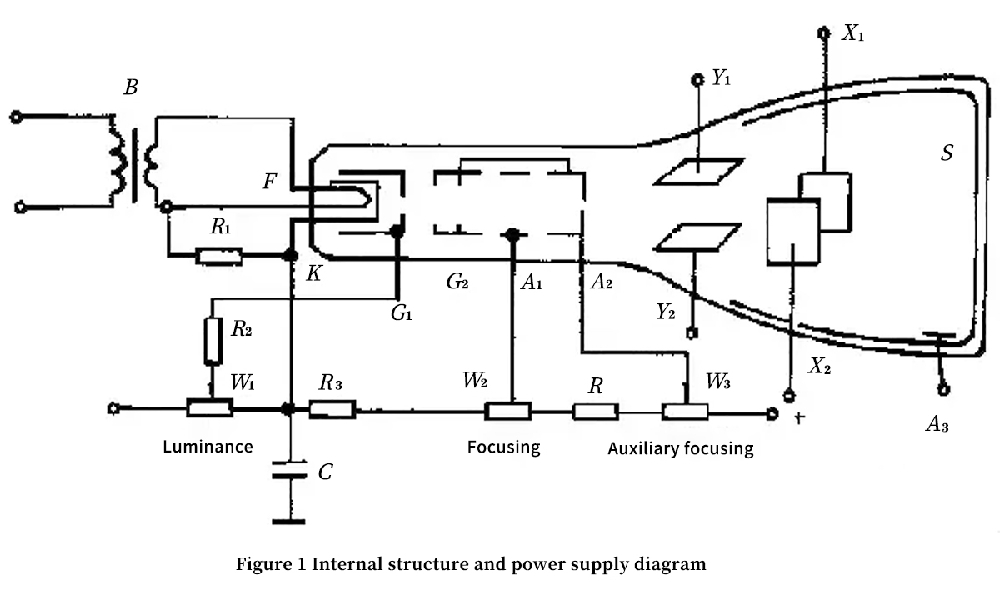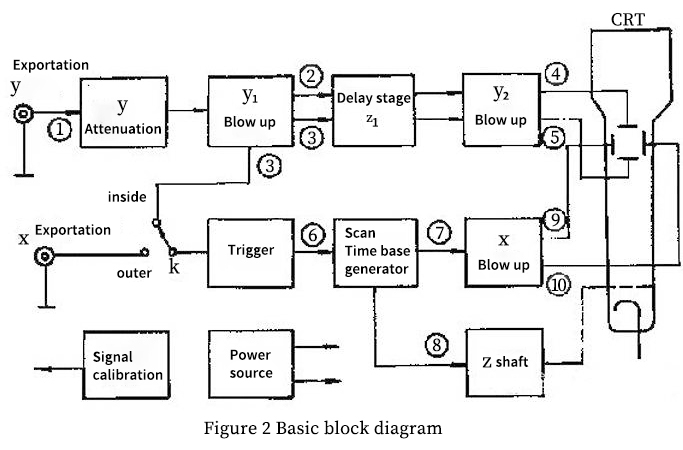In the realm of electronics and engineering, there's a powerful tool that serves as the eyes of electrical engineers and technicians, allowing them to visualize and comprehend the intricate dance of signals that flow through circuits. This tool is none other than the mighty oscilloscope, an indispensable instrument that has revolutionized the way we perceive and troubleshoot electrical phenomena.
Basic Knowledge
Oscilloscope is an electronic measuring instrument that utilizes the characteristics of an electronic oscilloscope to convert alternating electrical signals, which cannot be directly observed by the human eye, into an image to be displayed on a fluorescent screen for measurement. It is an important instrument for observing the experimental phenomena of digital circuits, analyzing the experimental problems, and measuring the experimental results. Oscilloscope consists of an oscilloscope and power supply system, synchronization system, X-axis deflection system, Y-axis deflection system, delayed scanning system, and standard signal source.
Oscilloscope
The cathode ray tube (CRT), referred to as the oscilloscope, is the core of the oscilloscope. It converts electrical signals into optical signals. As shown in Figure 1, the electron gun, the deflection system, and the fluorescent screen are sealed in a vacuum glass case, constituting a complete oscilloscope

Components of an Oscilloscope
From the previous subsection, it can be seen that the shape of the graph displayed by the oscilloscope can be controlled by controlling the voltages on the X-axis deflector plate and the Y-axis deflector plate. As we know, an electronic signal is a function of time, f(t), which changes with time. Therefore, as long as the x-axis deflection plate in the oscilloscope with a voltage proportional to the time variable, in the y-axis plus the measured signal (after the proportion of the amplification or reduction), the oscilloscope screen will display the measured signal with the time-varying graphics. In electrical signals, the signal that is proportional to the time variable over a period of time is a sawtooth wave.
The basic block diagram of an oscilloscope is shown in Figure 2. It consists of five parts: the oscilloscope, the Y-axis system, the X-axis system, the Z-axis system, and the power supply.

The Anatomy of an Oscilloscope
- Display Screen: The visual heart of the oscilloscope, where waveforms are graphically represented.
- Vertical Channels: These represent the voltage measurements and are usually labeled as "Channel 1," "Channel 2," and so on. Each channel can display a separate waveform.
- Horizontal Time Base: This control allows users to adjust the time scale on the x-axis, enabling a detailed examination of signal dynamics.
- Triggering System: The trigger helps stabilize and sync the waveform display, ensuring repetitive signals appear consistently on the screen.
- Probes: These are connected to the channels to capture signals from circuits and devices under investigation. Probes come in various types and sensitivities.
- Vertical and Horizontal Controls: Used to adjust voltage sensitivity, vertical position, and horizontal position, helping users fine-tune the displayed waveform.
Applications of Oscilloscopes
- Signal Analysis: Oscilloscopes are invaluable for scrutinizing waveform characteristics, like amplitude, frequency, and phase. Engineers can identify irregularities, distortions, and noise that affect signal integrity.
- Circuit Debugging: When circuits don't behave as expected, oscilloscopes can pinpoint issues by revealing unexpected spikes, glitches, or anomalies in the signals.
- Frequency Measurement: Oscilloscopes can determine signal frequencies, helping engineers work with devices that involve oscillations, such as radios and electronic musical instruments.
- Digital Signal Analysis: Modern oscilloscopes can analyze digital signals, helping engineers troubleshoot digital circuits and communication protocols.
- Pulse and Timing Analysis: Engineers can study the precise timing of pulses and transitions within signals, critical in applications like telecommunications and digital logic.
Precautions for the Use of Oscilloscopes
- Ensure Oscilloscope Tube Protection: The oscilloscope tube serves as the fundamental component, demanding careful protection against excessive impacts and vibrations.
- Prevent Electrostatic Interference: Sensitivity to static electricity characterizes the electronic parts of the oscilloscope. Take care to avert electrostatic interference and refrain from touching these components.
- Mind Overloading Risks: Exercise caution with the oscilloscope's input port to sidestep overloading scenarios. Doing so will prevent potential harm to both the circuit and the oscilloscope itself.
- Prioritize Safety: Utilize oscilloscopes with a safety-first mindset, guarding against electric shocks, short circuits, and other potential hazards.
- Embrace Regular Maintenance: Consistent maintenance is essential for oscilloscopes. Activities such as cleaning, calibration, and component replacement are necessary for sustaining optimal performance and prolonging the instrument's lifespan.
Oscilloscopes are indispensable instruments in electronic measurements, various types of oscilloscopes for sale in sisco. It can help engineers observe and analyze the characteristics of various electrical signals to achieve circuit design, troubleshooting, signal analysis, and other applications. The use of oscilloscopes needs to pay attention to some basic methods of use and precautions to ensure the accuracy and safety of the measurement.
The oscilloscope stands as a time-tested instrument that bridges the gap between the abstract world of electrical signals and the tangible insights engineers and technicians need to effectively design, debug, and maintain electronic systems. As technology advances, so too do oscilloscopes, evolving into sophisticated instruments that continue to be an integral part of the electronics landscape, providing us with a window into the invisible currents that power our modern world.

